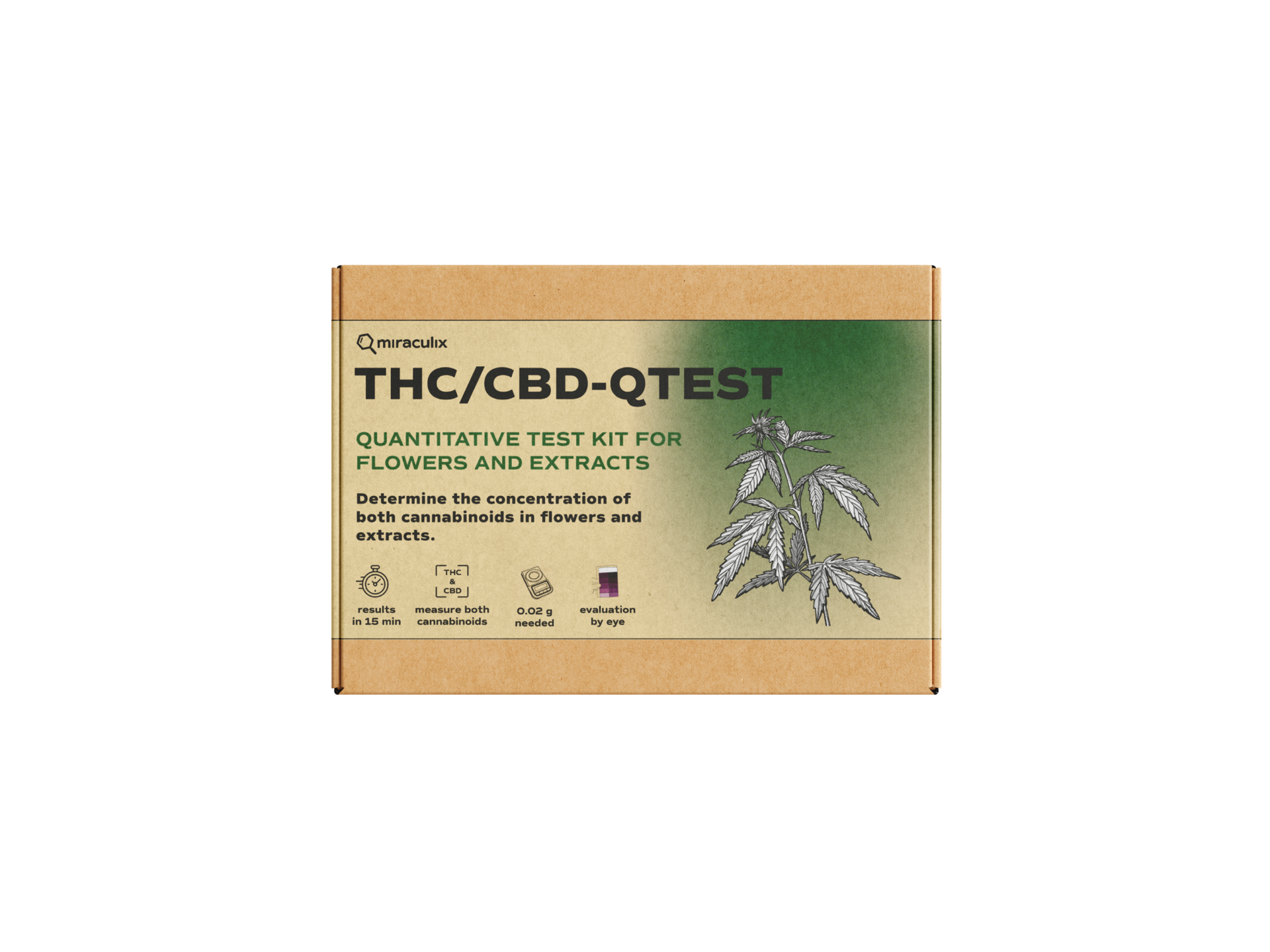
The THC/CBD-QTest
With newer and newer strains and more potent flowers, the effects can only be guessed.
The THC/CBD-QTest can indicate both the THC content and the CBD content via 2 independent colorings. The test kit itself is uncomplicated and easy to use and also allows conclusions to be drawn about synthetic cannabinoids with their results.
Frequently asked questions about the THC/CBD QTest
These are the answers to frequently asked questions so far:
For the determination of dried plant material, you only need 20 mg of starting material.
Yes, this is easily possible. The THC/CBD-QTest is designed so that you can determine both THC and CBD. This is done in 2 independent colorations and can therefore also be evaluated individually.
The answer to this is yes! The THC/CBD-Q test can be used for both plant material and extracts to determine the concentration.
We would like to give you a little more information so that you can test extracts easily. You can find it below:
When testing extracts:
Extracts are more concentrated. To ensure that the color result of the test still fits the scale on the evaluation card, you have to reduce the amount of starting material accordingly. Depending on the extract, we recommend using only half (10 mg) or a quarter (5 mg) of the actual starting amount and multiplying the endresult accordingly.
When testing liquid or oils:
Use the enclosed pipette for testing liquid samples. Typically even high-THC vapes do not have more than 30 % THC on average. If you expect to have such a high concentrated sample, we recommend to use 1 drop for the test (for lower concentrated use more drops).
Because the evaluation color scale is calibrated for a 20 mg sample (and state the percentage of THC corresponding to this), but you will test a liquid, you need a reference weight to set the final result in relation with. So you have to measure the actual weight of the drops you use for the test. Therefore fill the pipette with the liquid, then put your vial, where the liquid is in on a precision scale and note first the weight of you the amount. Then drop the number of drops you want to use for the test back into the vial and note the difference, so you that you get the weight of the drops you use for the test as reference. You could also measure the weight of more drops and divide it through the number of drops to get the weight of one. Perform the test as described and follow the example given in the section 4. “Evaluating the result” to calculate the concentration for your remaining liquid.
SUMMARY
When testing plant materials:
use 20 mg flower material → Evalutaion scale ranges from 0-25 % THC
When testing extracts:
use 10 mg extract → Evalutaion scale ranges from 0-50 % THC
use 5 mg extract → Evalutaion scale ranges from 0-100 % THC
When testing liquids or oils:
Depending on THC content on average between 1-3 drops, drop weight must be weighed in parallel.
For extracts, depending on the THC concentration, only half or a quarter of the actual sample should be used and the result then multiplied accordingly.
Here are some sample calculations for the use of extracts and liquids:
- 10 mg extract was used → multiply the results of the color chart by two
- 5 mg extract was used → multiply the result of the color chart by four
- 1 drop of oil was tested, and weighed with 20 mg → result can be read directly from the scale
- 2 drops of oil weighing 50 mg were tested, and you read a 20 % THC content from the color chart:
- 50 mg/20 mg = 2.5 → 20 %/2.5 = 8 % THC content in the entire sample